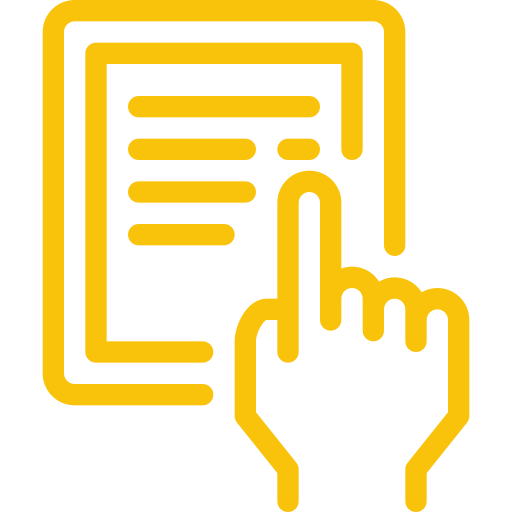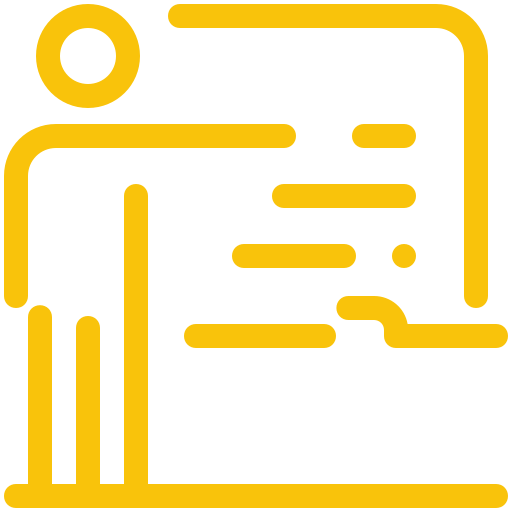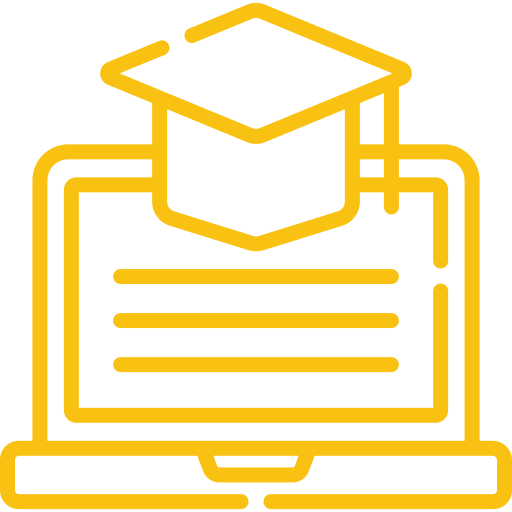Let’s face it, every teacher has bumped into the tough task of getting kids excited about diving into books. It’s not just about getting them to open a book; it’s about lighting that spark of curiosity and understanding within them. This journey into teaching reading strategies is all about finding ways to make words leap off the page and dance in the imagination of young minds. With an ever-growing digital world vying for their attention, how do we as educators turn the tide? How do we transform passive viewers into active readers who delve with joy into stories, facts, and ideas? Finding the right mix between what we know works and fresh, new strategies is where the magic happens.
Effective Reading Strategies for Teaching
As a teacher, you know that reading is a fundamental skill that your students will use every single day of their lives. From reading street signs to restaurant menus, to text messages and emails, there’s just no escaping it – reading is everywhere. This makes teaching reading strategies and developing proficient reading skills in your students absolutely essential. Not only for their academic success but for their daily lives as well. Choral reading is a fun and engaging strategy where students read a text aloud together in unison. This helps build fluency and confidence in reading, especially for struggling readers who may feel self-conscious reading on their own.
Partner Reading
Partner reading is another great strategy that involves students taking turns reading a text aloud to each other. This method offers students a chill way to brush up on their reading and understanding skills, all while enjoying the chance to hear one of their classmates share a story out loud. Studies have shown that partner reading can significantly improve reading fluency and comprehension in students. Repeated reading is just what it sounds like – having students read the same text multiple times. By going over the text again and again, students get better at reading smoothly and understanding it deeply, since they’re getting more used to both the words themselves and what those words are trying to say.
Activating Prior Knowledge
Activating prior knowledge is a crucial step in the reading process. By asking students what they already know about a topic before they start reading, you’re helping them make connections between the text and their own experiences and knowledge. This not only helps with comprehension, but it also makes the reading more meaningful and engaging for students. Research shows that activating prior knowledge can significantly improve reading comprehension.
Providing Student Choice
Giving students a choice in what they read can make a huge difference in their engagement and motivation. When students are able to choose texts that interest them, they’re more likely to be invested in the reading process. As a teacher, you can provide a variety of texts at different reading levels and allow students to select what they want to read. This not only helps with engagement but also with differentiating instruction for diverse learners.
In my own classroom, this means building a library of books on a wide variety of topics and reading levels. It also means visiting book sales and asking for handouts from fellow teachers who have their own children.
Incorporating Technology and Instructional Aids
In today’s digital age, incorporating technology and instructional aids into your reading instruction is a must. These tools don’t just spice up the learning experience for students; they’re also your secret weapon for tailoring lessons to fit everyone’s needs, ensuring every learner gets a fair shot. Graphic organizers are a fantastic instructional aid for teaching reading comprehension. These visual tools help students organize information, make connections, and see the relationships between ideas in a text. There are many different types of graphic organizers to choose from, such as Venn diagrams, story maps, and cause-and-effect charts. The key is to select the organizer that best fits the text and the comprehension skill you’re focusing on.
Creating a Word Wall
A word wall is a collection of words that are frequently used in a particular subject area or unit of study. These words are up on the classroom wall, ready for students to glance at and draw inspiration from all day long. Putting up word walls can really spice up the way you learn new words and get better at spotting them in a flash. They also serve as a visual reminder of important words and concepts for students.
Leveraging Educational Technology
When it comes to beefing up your reading lessons, there’s no shortage of tech tools at your fingertips designed to make learning more engaging and effective. From e-books and online reading programs to interactive whiteboards and reading apps, the possibilities are endless. One of the benefits of using technology is that it allows for a more personalized learning experience. Students can work at their own pace and level, and teachers can easily track progress and provide targeted support. Research has shown that using technology can be an effective way to support struggling readers and enhance reading instruction for all students.
Developing Foundational Reading Skills
Before students can become fluent readers, they need to develop a strong foundation in the basic building blocks of reading. This includes phonemic awareness, phonics, and fluency skills. Phonemic awareness is the ability to hear, identify, and manipulate the individual sounds (phonemes) in spoken words. This is a crucial skill for early readers, as it helps them understand the connection between spoken language and written text. There are many fun and engaging activities you can use to teach phonemic awareness, such as rhyming games, sound matching, and blending and segmenting activities.
Explicit Phonics Instruction
At its heart, phonics is all about connecting the dots between how letters and their combinations stand for the sounds we make when we’re chatting away. Explicit phonics instruction involves directly teaching students these letter-sound relationships in a systematic and sequential way. This type of instruction has been shown to be highly effective in improving reading skills, particularly for struggling readers. The National Reading Panel found that explicit phonics instruction is one of the most effective ways to teach reading.
Building Fluency
Fluency is the ability to read accurately, quickly, and with proper expression. Fluent readers are able to focus on comprehension because they don’t have to spend as much mental energy on decoding words. The key is to provide plenty of opportunities for students to practice reading aloud and to give feedback and support as needed.
Engaging Students in Reading Activities
One of the best ways to improve reading skills is to simply get students reading more. The more exposure they have to a variety of texts, the better readers they will become. Read-alouds are a great way to model fluent reading and expose students to new vocabulary and concepts. They also provide opportunities for class discussions and critical thinking. When selecting texts for read-alouds, look for books that are slightly above your students’ reading level. This will expose them to new words and ideas while still being accessible with your support.
Silent Reading Time
Providing time for silent, independent reading is crucial for building reading stamina and fluency. During this time, students should be reading self-selected texts at their own level. As the teacher, your role during silent reading time is to confer with individual students, provide support and guidance as needed, and monitor progress. You can also use this time to model silent reading behavior by reading your own book.
Book clubs are a great way to get students engaged in reading and discussing texts with their peers. Students can choose a book to read together, set reading goals, and meet regularly to discuss the book. Book clubs not only promote a love of reading but also help students develop important communication and collaboration skills. They also provide opportunities for students to explore different perspectives and ideas.
On Fridays in my room we still do silent sustained reading. They can read anything they want for 15 minutes. It’s amazing how many students haven’t ever done that, and it’s not unusual for them to ask to borrow a book for the weekend.
Reader’s Theater
Reader’s theater is a fun and engaging way to build fluency and expression in reading. In reader’s theater, students “perform” a text by reading aloud from a script, using vocal expression and gestures to bring the characters to life. This activity not only helps with fluency but also promotes comprehension and engagement with the text. Plus, it’s a great way to incorporate drama and performance skills into your reading instruction.
Strategies for Struggling Readers
Despite our best efforts as teachers, some students will still struggle with reading. These students may need extra support and targeted interventions to help them catch up to their peers. Guided reading is a small-group instructional approach where the teacher works with a group of students who are reading at a similar level. During guided reading, the teacher provides support and guidance as students read a text that is slightly challenging for them.
This approach allows for targeted instruction and differentiation based on students’ needs. It also provides opportunities for students to practice reading strategies and receive immediate feedback from the teacher.
One-on-One Tutoring
For students who are significantly behind in reading, one-on-one tutoring may be necessary. This can be done by the classroom teacher, a reading specialist, or a trained volunteer. During tutoring sessions, the tutor works with the student on specific skills and strategies, provides plenty of practice and feedback, and monitors progress closely. The goal is to help the student catch up to grade-level expectations as quickly as possible.
Differentiated Instruction
Differentiated instruction is an approach where the teacher adapts instruction to meet the diverse needs of learners in the classroom. This can involve using different texts, materials, and activities based on students’ reading levels, interests, and learning styles. Differentiation can be done through small-group instruction, learning centers, or individual assignments. The key is to provide a variety of ways for students to access and engage with the content, while still holding all students to high expectations.
Building Background Knowledge and Vocabulary
One of the biggest barriers to reading comprehension is a lack of background knowledge and vocabulary. If students don’t have the prior knowledge or word knowledge to make sense of a text, they will struggle to understand it no matter how well they can decode the words.
Pre-reading Activities
Pre-reading activities are a great way to build background knowledge and prepare students for reading. These activities can include class discussions, videos, hands-on experiences, or even virtual field trips related to the topic of the text. The goal is to activate students’ prior knowledge and give them a framework for understanding the new information they will encounter in the text. Research has shown that building background knowledge can significantly improve reading comprehension, especially for struggling readers.
Vocabulary instruction is another crucial component of reading instruction. The more words students know, the better equipped they are to understand the texts they read. Effective vocabulary instruction involves more than just memorizing definitions. Students need multiple exposures to new words in different contexts, opportunities to use the words in their own speaking and writing, and strategies for figuring out the meaning of unknown words. Some effective vocabulary instructional strategies include using word maps, playing word games, and teaching word roots and affixes.
Connecting to Students’ Experiences
Another way to build background knowledge and vocabulary is to connect the texts students are reading to their own experiences and prior knowledge. This not only helps with comprehension but also makes the reading more relevant and engaging for students.
One way to do this is through class discussions where students share their own experiences and knowledge related to the topic of the text. You can also have students write about personal connections to the text or create artwork or other projects that express their understanding of the text in relation to their own lives.

Developing Critical Thinking and Comprehension Skills
The ultimate goal of reading instruction is to develop students’ critical thinking and comprehension skills. These are the skills that will enable students to not only understand what they read but also analyze, evaluate, and apply the information to new situations.
Questioning Strategies
One of the most effective ways to promote critical thinking and comprehension is through questioning. Throwing some curveball questions at students before, while they’re in the thick of it, and after they’ve flipped the last page, can really take their understanding to new heights. Some effective questioning strategies include:
- Asking open-ended questions that require more than a yes/no answer
- Using Bloom’s Taxonomy to ask questions at different levels of thinking
- Encouraging students to ask their own questions about the text
- Providing opportunities for students to discuss and debate their answers
Summarizing and paraphrasing are important comprehension strategies that help students identify and remember the main ideas of a text. When students summarize, they are able to distill the most important information and put it in their own words. Paraphrasing is a similar skill that involves restating the author’s ideas in the student’s own words. This helps students process and internalize the information, making it more likely to stick in their long-term memory.
Making Inferences and Predictions
Making inferences and predictions are higher-level thinking skills that require students to read between the lines and use their own knowledge to fill in gaps in the text. When students make inferences, they are able to draw conclusions based on clues in the text and their own prior knowledge.
Predicting involves using information from the text and prior knowledge to make educated guesses about what will happen next. This not only keeps students engaged in the reading but also helps them monitor their own comprehension as they read. Teaching kids the right ways to read isn’t just about making them good at it now; it’s about setting them up to love reading for their whole lives.
By incorporating a variety of instructional approaches and activities, we can help all students develop the skills and confidence they need to succeed in reading and in life.
Mix up your reading instruction with strategies like choral and partner reading, activating prior knowledge, and giving choices in what to read. Use tech aids, graphic organizers, word walls, and book clubs to make learning dynamic. For struggling readers, try guided groups or one-on-one tutoring. Remember: building a strong foundation in phonics and fluency is key.
FAQs in Relation to Teaching Reading Strategies
What are 5 active reading strategies?
Skim before diving in. Highlight key points. Summarize sections. Ask questions as you go. Connect it to what you know.
What is the most effective way to teach reading?
Tailor instruction to individual needs, mixing phonics with whole-language approaches, and keeping lessons engaging works best.
How do you teach a struggling reader to read?
Start with phonics for a solid foundation, then add tailored support through guided practice and patience.
What are the four methods of teaching reading?
The four pillars: phonics for decoding words; fluency training; vocabulary expansion; and comprehension strategies build strong readers.
Conclusion
In our exploration of teaching reading strategies, it’s clear this isn’t just another task on our to-do list; it’s a mission critical to shaping informed, thoughtful individuals ready to tackle challenges with resilience and creativity. From choral readings that harmonize voices in unity, partner readings igniting discussions between peers, repeated practice enhancing fluency – each strategy serves as a stepping stone towards building confident readers equipped for life’s vast adventures.
We’ve navigated through techniques like activating prior knowledge connecting lessons to lived experiences – proving learning does indeed extend beyond classroom walls. We discovered giving students choice empowers them becoming architects of their own educational journey.
This isn’t merely teaching kids how read but instilling lifelong love literacy at heart every lesson plan crafted smile shared moment discovery witnessed room So let us continue sow seeds passion books ensuring future generations find solace wisdom pages yet turned stories still told Because end day what makes great reader belief themselves power story change world
If you’re interested in learning more, consider taking one of our classes from Midwest Teachers Institute:
– Art and Science of Teaching Reading
And coming soon, our reading endorsement that you can add to your teaching certificate.





















